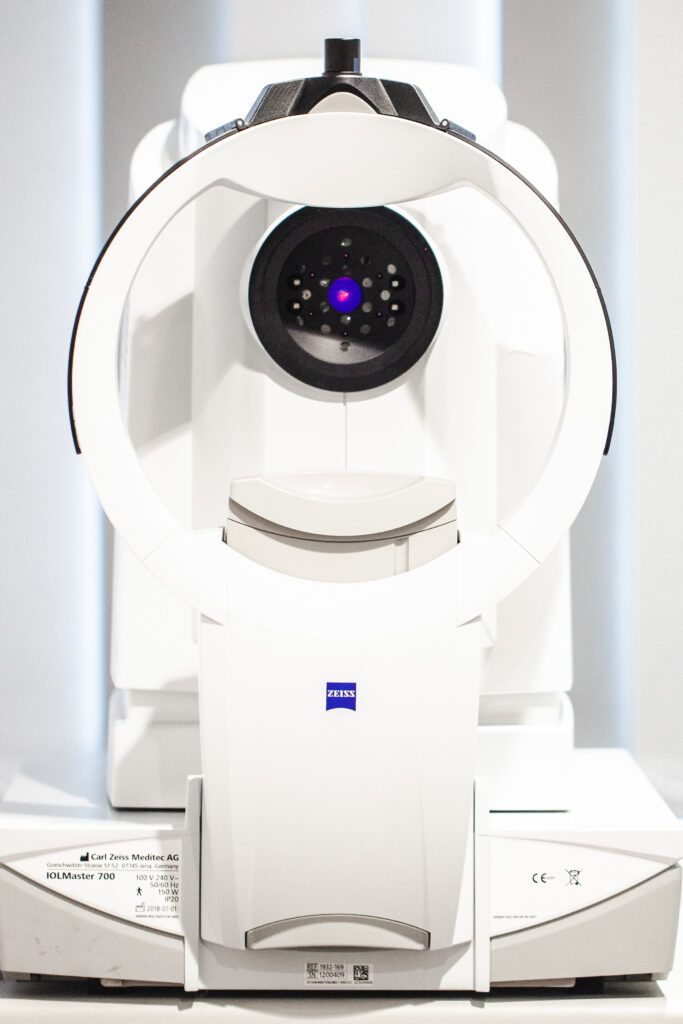A cataract, also known by the technical term cataract, is a clouding of the lens of the eye. It is a common eye condition. As the disease progresses, the lens becomes increasingly inflexible and opaque. This reduces visual acuity and sufferers report a kind of fog or haze in front of their eyes.
Cataract surgery is the most frequently performed human eye surgery in Germany. In fact, with over 750,000 surgeries performed each year, it is one of the most performed surgeries overall. The good news is that in almost 90 percent of those who have undergone surgery, it is largely possible to restore the original visual performance. At BeyondEye, we have made the diagnosis and treatment of cataracts a treatment focus in our practice.
The best time for cataract surgery depends on many factors. A major role is played by the extent to which you feel restricted in your everyday life by the deterioration in your vision. Due to the clouding of the lens, visual performance can deteriorate vehemently and certain activities, such as driving a car, become impossible. If a cataract is in an advanced stage, visual performance can drop so dramatically that blindness of the affected eye is imminent. In such a case, surgery should be performed as soon as possible, as the prospects of improvement clearly outweigh the risks of the procedure.
Would you like to make an appointment for cataract treatment? Then please feel free to contact us by phone or simply arrange your desired appointment online.
Cataract treatment involves the insertion of an artificial lens in place of the original lens of the eye. The new artificial lens can be calculated for a specific distance (distance or near), so that the patient then only needs reading or distance glasses. We will decide together with you which correction option makes the most sense.
Artificial lenses are usually made of acrylic material, which is very flexible. Thanks to this flexibility, they can be inserted into the eye folded through a tiny opening and only unfolded there. Multifocal artificial lenses are also used when necessary. They not only correct presbyopia, but also take into account nearsightedness or farsightedness as well as astigmatism. If the lens is optimally fitted, you can even do without varifocals or reading glasses.
All lenses used in cataract surgery are usually well tolerated and remain in the eye permanently. By the way, they are not visible there.
In the run-up to the surgery, we will ask you for all the necessary data. We also take some measurements that are necessary for an optimal result after the surgery. This is important so that the selected artificial lens fits perfectly. Following the preliminary examination, you will get to know the anesthesiologist in a personal interview. This deals with the various options for anesthesia. You can choose between partial anesthesia, general anesthesia or local anesthesia with the help of eye drops.

Patients often ask us what the cataract surgery procedure looks like. After the anesthesia you have chosen has been administered, the so-called eyelid spreader is inserted. This keeps the eye open during surgery. Then a minimal, previously calculated incision can be made on the outer edge of the eye. Through this small opening in the cornea we reach the lens capsule, the natural envelope of the lens. The front of the lens envelope is then opened. Here, an ultrasound cannula specially developed for ophthalmology (phacoemulsification) is now used and carefully crushes the old, cloudy lens. Subsequently, these residues are completely extracted. Once the capsular bag is clean, we insert the pre-selected artificial lens there.
Immediately after surgery, your eye will be covered with an ointment dressing. For your health safety, you will then remain with us for a few minutes for observation. If no complications occur, you can return home the same day. Please note: It is not possible to drive home in your own car on the day of surgery. Therefore, you should make sure in advance that someone can drive you. You should also avoid strenuous exertion, sports and overhead work for the first few weeks after surgery. When performing personal hygiene, make sure that no soap-containing agents get into the operated eye. In the first four weeks after the operation, regular follow-up visits to our practice are also important so that we can monitor your healing success well.
About 97 percent of cataract surgeries in Germany are free of complications. Nevertheless, this operation – like all surgical interventions on the eye – also involves risks. For example, if a tear in the lens envelope occurs during this surgery, the natural lens may fall into the vitreous. This is correctable by further surgery. In very rare cases, blindness can occur, caused by a bacterial infection. Bleeding in the eye can also not be completely ruled out. With our years of experience and state-of-the-art technology, you can feel confident in our practice and in the hands of our team.
Thanks to careful execution and good aftercare, we keep a close eye on the course of cataract surgery. Nevertheless, a so-called “after-cataract” can occur (in about 20 to 30 percent of operated patients). In this disease, the remnants of the remaining lens capsule become cloudy. In most cases, this opacity can be treated with laser treatment. In very rare cases, a second surgical procedure is necessary. The posterior cataract tends to occur in younger patients.
Do you still have questions about cataracts? Then our practice team will be happy to help you on 0221 / 87 10 50